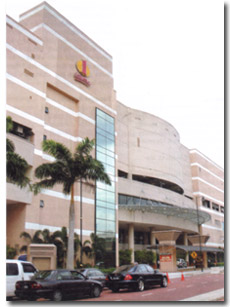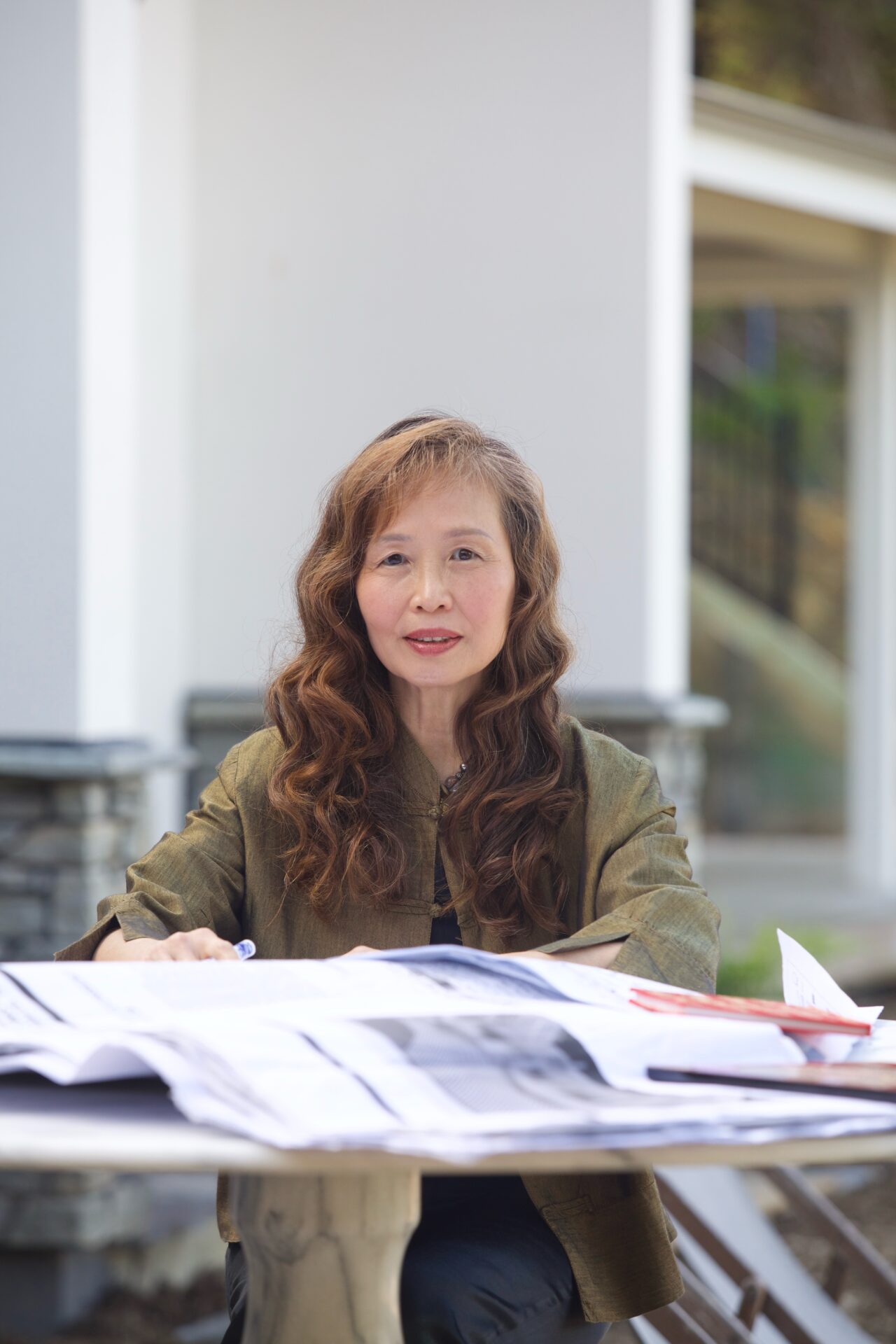The Edge, City & Country, November 14, 2005 By Master Boon Yap

A lot can be done in large properties to bring maximum prosperity to all parties.
Most people associate feng shui with homes. However, feng shui originally began as a method to locate burial sites according to the environment, Yin and Yang forces, and the flow of rivers and springs. These “king-maker” tombs were believed to be responsible for the propitious advance of the clan and later on, the continuation of a dynasty. This knowledge was known as Yin feng shui.
Subsequently, feng shui was applied to the living to locate settlements for an agrarian society, property for aristocrats, palaces for emperors and sites of government. Together, Yin-domain and Yang-domain feng shui ensured the well-being of many noble families of the day and became responsible for creating powerful ruling classes from these families and the perpetuation of their dynastic rule.
It was only in the Tang dynasty that one of the most revered masters took the secrets to the lay people and so began the adoption of feng shui for homes.
In ancient times, the benefits of feng shui were seen in a different light. Then, feng shui came to be appreciated as the tool that could empower a nation through the selection, location and alignment of the seat of administration and power, and holy centres that govern spiritual well-being. Today, the priorities have changed — people use feng shui mostly to determine the best positions of their homes and office space.
Business people, too, consult feng shui before setting up their factory or manufacturing facility or constructing a commercial block. Only a few appreciate the benefits of incorporating feng shui into their property development projects. But rare is its use in the location of city councils/local government buildings, towns, cities, and national seats of government.
Seeing that feng shui is able to help bring prosperity and well-being to residents in a home, it follows that feng shui benefits are not bound by the type of property or its function. As we move up the scale from individual homes to a nationwide context, good feng shui can influence the individual, family, bosses and employees in businesses and corporations, and finally, citizens of a nation.
So, how can we make use of the natural environment to benefit more people and, in doing so, benefit ourselves?
Feng shui for large properties
Many are familiar with feng shui for homes and office spaces, but the application of feng shui in large property developments may escape our notice. It is this aspect that has the most potential to harness powerful benefits. Unless you are blessed with the opportunity to select an empty piece of land and build your property entirely on feng shui principles, no matter how good the feng shui master, most of us are left with limited options in optimising the feng shui of our homes or office space.
Playing benefactor
But if property developers were to take on the role of benefactor by incorporating good feng shui principles at the inception of the project, buyers will feel considerably at ease. Besides, they need not insist on bringing along their own feng shui masters who are perceived to be the manifestation of chaos — the disruptor of all things logical and aesthetic. Moreover, the property is more likely to sell well, thereby benefiting the developer.
Today, many buyers have some knowledge of feng shui or they would consult a master when buying a house. However, a good many people possess some intuition as to whether a property “feels” good or not. A property that incorporates good feng shui principles invariably possess an auspicious qi that can be transmuted into a sense of well-being for potential buyers.

Consider the See Hoy Chan Sdn Bhd Group. Since 1963, from the day it first incorporated feng shui into the Paramount Garden project, the company has grown and expanded through thick and thin in an ever-changing economy. For instance, Bandar Utama continues to attract premium prices compared with similar types of developments and some consider it the benchmark for township development. Even during the economic crisis, houses there managed to hold their price. Another project is the 1-Utama shopping centre. Dubbed as one of the more “happening” shopping complexes in Selangor, it is always packed with shoppers. It is the flagship commercial development for the company. The group’s projects typically began with feng shui advice from my father, Grandmaster Yap Cheng Hai. Other signature developments are Taman Bahagia and Damansara Utama in Petaling Jaya. With quality management and support from good feng shui, the company has become one of the leaders in residential and commercial township development.
Another development that uses authentic classical feng shui for the betterment of all is Mutiara Goodyear Development Bhd. Its Mutiara Upper East Ampang development was designed and completed based on a combination of the different schools of San He, San Yuan, Xuan Kong and Ba Zhai. The apartment blocks have been located in an auspicious area, and are well-served with good roads and facilities such as tennis court, indoor sauna, multi-purpose hall, gymnasium, barbecue area, surau, and garden, thus harnessing the good qi and avoiding the bad. For example, the swimming pool is located in an auspicious area based on Zheng Shen and Ling Shen theory of Luo Shu which activates the good wealth qi there. Each block has been oriented to harness good qi for anyone staying there.
Each apartment has been designed with all the main doors and rooms in the correct orientation. Even the internal rooms have been oriented appropriately to benefit from the universal benevolent energies, and also to correspond to the personal auspicious directions of the East West Life Gua. This means everyone can find not only an apartment with conducive energies, but they also have the option of choosing an apartment to match their Life Gua according to the Ba Zhai system. This has the added benefit of maximising their benevolent qi.
Another project worthy of note is the residential development at Putrajaya. During the conceptual phase of Putrajaya, my father was invited by Malaysian Resources Corporation Bhd (MRCB) to evaluate 600 acres of oil palm land. The developer asked him to see the place as it wanted to develop one of the most magnificently laid-out real estate ever. Grandmaster Yap did the layout for the roads in and out of Putrajaya. He also designed about 350 houses, all according to auspicioius feng shui principles. He made sure that all the homes were orientated to match several schools of feng shui that would invariably please any feng shui master that the potential buyers might engage.
Together with the architects, landscape designers and builders, many months were spent to optimise the benefits of feng shui for the whole development — harnessing the good energies of the natural landscape. Where natural forms exist, they would tap the qi by orienting appropriately. Where none were present, they would construct man-made formations such as the lake.
Like the Mutiara Upper East development, each house was laid out to suit the auspicious landscape and designed with appropriate orientation of the internal space. The locations and directions of the main doors, internal doorways, beds, cooking areas, and well thought-out orientation of the living space were all crucial in ensuring auspicious feng shui for the prospective occupants. It was an immense project and all parties did their best to create one of the most well-thought-out real estate developments in accordance with feng shui. However, it is not clear to what extent, if any, the design was ultimately adopted.
Impact on developers
Another interesting angle to consider in large property development is the impact of good feng shui on the developers themselves. An example of a project my father remembers quite well was the one that started sometime ago in Kuala Tilam. During a property market uptrend, the developer first built 12 shophouses plus attractive infrastructure such as a cinema, market, and waiting areas for public transport. The intention was to sell the first phase in order to finance the next one. But these 12 shophouses could not be sold. Buyers preferred to sit out for two years before they bought the subsequent 88 shop-houses. Even when everything was sold and all the facilities were fully operational, these 12 shophouses made meagre pickings. The feng shui was reasonable. Although the developers could not bear the added cost of landscaping the environment, they had taken steps to harness energies of the natural environment and avoid malevolent qi. However, they had not considered one of the most powerful schools, the Ba Zhai system, for one of the owners to ensure success for all.
The beauty of a large property development is the satisfaction that a lot can be done to the feng shui of the place to bring maximum prosperity to all parties, whether they be the developers or the buyers. Good feng shui means smooth progress during construction, the property sells, and the occupants benefit from residing in it. Bad feng shui causes delays or problems with construction and sales.
Boon Yap is conducting the Yap Cheng Hai Academy’s feng shui practitioners’ courses. For details, contact enquiry-at-MasterBoon.com or call 012-3031991/016-680 6068. Website: www.Masterboon.com
Forward this information to your colleagues, friends or business associates who might benefit from this article.






